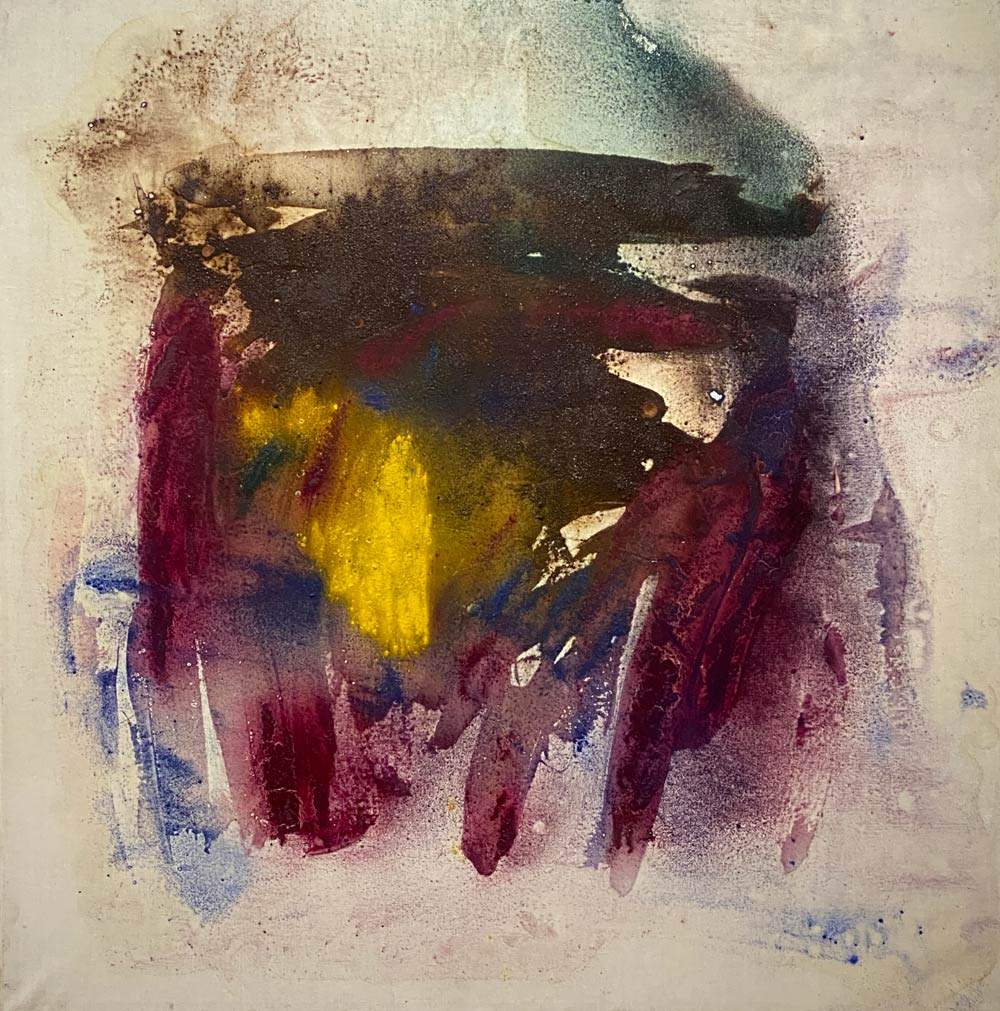From June 5 to September 30, 2022, ACP Palazzo Franchetti in Venice dedicates an exhibition to Vasco Bendini (Bologna, 1922 - Rome, 2015) on the centenary of his birth. The exhibition is titled Vasco Bendini. Gesture and Matter and comes in conjunction with the extensive retrospective currently underway at GNAM - National Gallery of Modern and Contemporary Art in Rome. In addition, the exhibition comes after a long absence in the lagoon city: thus, ACP - Art Capital Partners Palazzo Franchetti and Galleria d’Arte Maggiore g.a.m., which collaborated on the initiative, bring Bendini’s art back to Venice after his last appearance occurred at the 1972 Biennale, curated by Renato Barilli and Francesco Arcangeli.
The exhibition aims to be an opportunity to rediscover the multiform production of an artist tireless in perpetuating with the most diverse means of expression an eclectic expressive research, but always fueled by the desire to deepen the cognitive dimension of his own being. Bendini is an anticipator of trends, precursor of the Informal and initiator of Arte Povera. The exhibition through a selection of works from the 1950s, the Informal period, through the 1960s, follows the evolution of Bendini’s research, which comes to the brink of performance art, not to stop at the challenge of polymatericity in the following decades.
Vasco Bendini (Bologna 1922 - Rome 2015) is the protagonist of an artistic itinerary that often sees him as a precursor. It is an itinerary that conceals his coherence by going from time to time to investigate the presence of images that reveal themselves through a tireless and pioneering renewal of techniques and languages. Between 1941 and 1942 Vasco Bendini attended the Academy of Fine Arts in Bologna, where he had Giorgio Morandi and Virgilio Guidi as masters. It is from their lesson that the artist moves the first towards a Metaphysical painting, but the figurative element will flake off in an abstract sense as early as 1948, under the corrosiveness of a impetuous gesture that will soon be accompanied by a materiality capable of investigating, in the multiplicity of its forms, the revealing power of light. The progression toward a disintegration of the image chases the suggestions suggested by the theories of modern quantum physics, according to which our perception of reality in the form of matter is nothing more than an illusory trace of mobile compounds, made of waves and particles.
The gradual formal disintegration that can be detected in Bendini’s works is a spokesman for this reflection: starting in 1950, the chromaticisms become liquid, the painting expands hazily, guiding the viewer toward the presence of increasingly dematerialized and floating faces and bodies until, between 1958 and 1959, it flows toward that temperament of the Italian Informal of which Bendini is one of the masters. Of the image disappears the possibility of its direct reading, but inherent within the visual language of the artist is the constant presence of a flagrant figuration, yet all to be revealed. The works presented in the exhibition cover a span from 1958 to 1970: some of them are significant of his Informal phase, others introduce the object-based discourse of the early 1960s, when the author’s tireless research began to show a certain sensitivity in the early determination of those languages later defined as Arte Povera, of which Bendini turns out to be an anticipator.
As Barilli reminds us, the “poor” materials aggregated to Bendini’s canvases at this stage, placed in balance with those of traditional pictorial origin, Funk’s taste for waste, which had marked the late 1960s is maintained and perhaps enhanced in the decade of the 1970s with “found objects” along the lines of egg containers and flaps of twisted and crumpled cloth, as if it were the layer of the pictorial paste that was writhing and unraveling. Driven by the urgency of a quest for identity, “spirit and matter,” “thought and senses,” to use Maurizio Calvesi’s descriptions, Bendini’s art will know the most varied vocabularies and techniques. Accompanied by the pen of distinguished critics such as Argan, Barilli, Arcangeli and Calvesi, the artist obtained in 1964 a solo room at the 32. Venice Biennale, which was followed by one at the 36. Venice Biennale (1972).
Finally, his first anthological exhibition is in 1968, inaugurating an intense activity that will continue until 2015, the year of the end of a long career dedicated to a research always aimed at probing in depth the inafferable entity of his own essence. Presenting works made between 1958 and 1970, ACP Palazzo Franchetti’s exhibition aims to offer a close look at the artistic evolution of one of the great precursors of avant-garde art.
For all information you can visit the ACP Palazzo Franchetti website.
Image: Vasco Bendini, Untitled (1969; powdered colors and oil on canvas, 110 x 110 cm). Courtesy of Galleria d’Arte Maggiore g.a.m., Bologna/Milan/Paris.
 |
| An exhibition in Venice on Vasco Bendini, avant-garde abstractionist |
Warning: the translation into English of the original Italian article was created using automatic tools. We undertake to review all articles, but we do not guarantee the total absence of inaccuracies in the translation due to the program. You can find the original by clicking on the ITA button. If you find any mistake,please contact us.